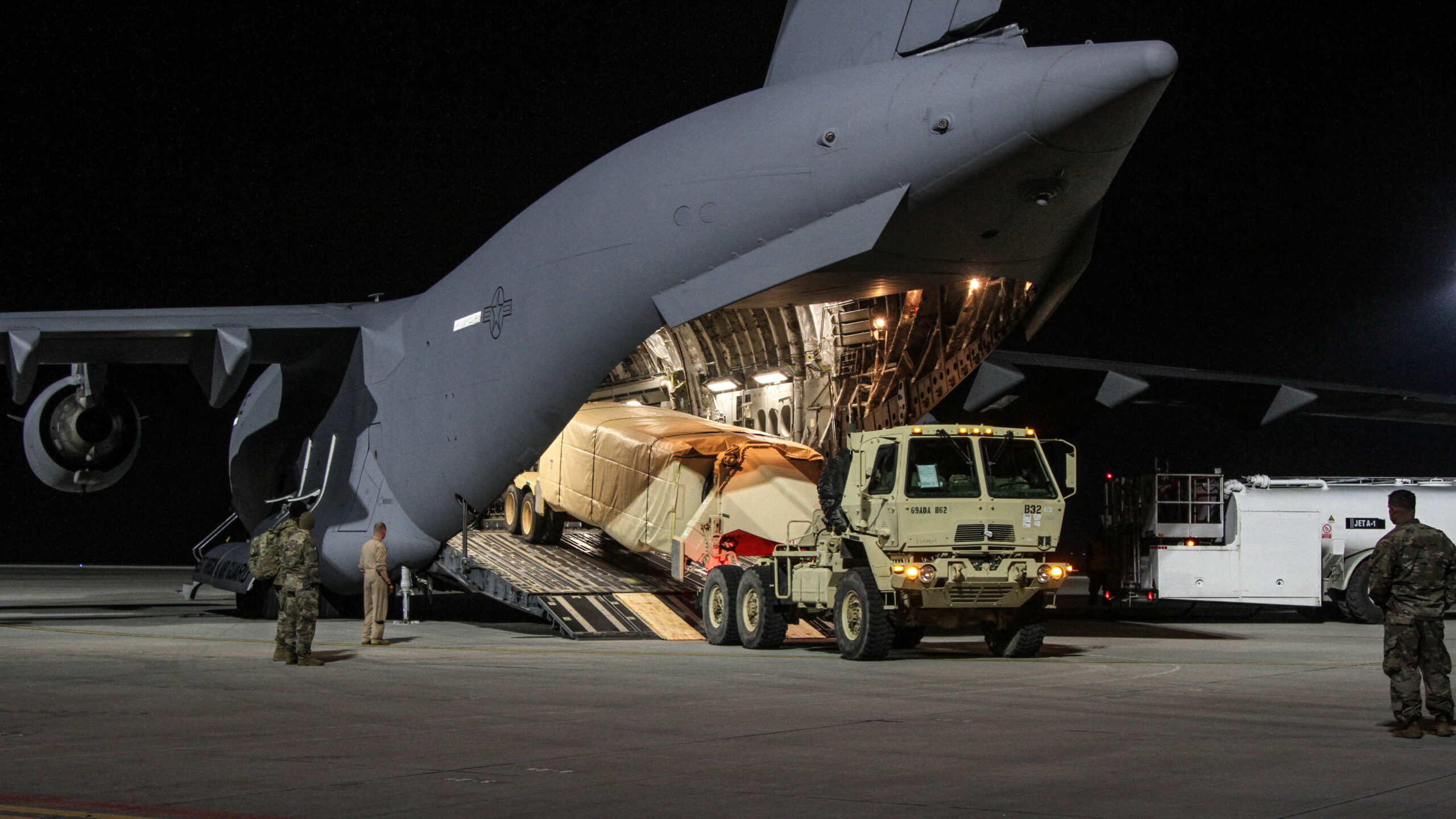
American troops offload equipment from a C-17 Globemaster III at Mihail Kogalniceanu (MK) Air Base, Romania, May 3, 2019. (Sgt. 1st Class Jason Epperson via DVIDS)
WASHINGTON — Russia’s invasion of Ukraine and the resulting conflict has shattered the Russian defense industrial base, leaving the second biggest provider of arms in the world far less capable of selling them abroad. Now the question US officials are examining is whether the US can exploit that weakness for its own strategic benefit.
“The sanctions and the export controls that the United States and our allies and partners around the world have imposed upon Russia are going to have long lasting consequences on the Russian industrial defense industrial base,” Cara Abercrombie, deputy assistant to the president and the White House’s coordinator for defense policy and arms control, said at the COMDEF conference today.
“I think, just as a practical matter, countries that have heretofore relied on Russian equipment are going to find it very difficult to get even basic supplies coming through because of this weakened defense industrial base. So it is an opportunity,” she said.
RELATED: Russian attempts to restock its military may be doomed to failure
The US and its allies within NATO are working to “rapidly transition” former Soviet bloc countries to NATO-made equipment instead of the old Soviet-made equipment in their inventories, but there are also sales opportunities in the Indo-Pacific, Abercrombie said.
“I think these are conversations we need to be having,” she said. “We’ve got to make sure the defense industrial piece is ready to go. But certainly from the US government perspective, we are looking at opportunities to provide countries what they need.”
The Biden administration has directed a number of different efforts that could expedite arms sales. In August, the Defense Department stood up a “tiger team” meant to streamline the Foreign Military Sales process, allowing the US government to be more anticipatory to partner nations’ emerging needs in the same way that it has responded to Ukraine’s wartime requirements. That effort is led by Bill LaPlante, the Pentagon’s undersecretary of defense for acquisition and sustainment, and Sasha Baker, US deputy undersecretary of defense for policy.
Once that work is finished, the White House could direct changes to the process across the agencies with a hand in foreign arms sales such as the Defense and State Departments, Abercrombie said.
“Within the National Security Council, I am looking at basically sort of doing a baton pass,” she said. “So as DoD sort of wraps up their initial analysis, we’ll be doing an interagency process to look at … how can we make the US foreign military sales system work better for our partners, or at least be a little bit faster.”
In another move meant to reduce Russia’s status as a major arms provider, the State Department earlier this month announced plans to provide $2.2 billion in Foreign Military Financing available to Ukraine and 17 other European nations. A total of $1 billion would be earmarked specifically for Ukraine, with the remaining funds made available to Albania, Bosnia and Herzegovina, Bulgaria, Croatia, the Czech Republic, Estonia, Greece, Kosovo, Latvia, Lithuania, Moldova, Montenegro, North Macedonia, Poland, Romania, Slovakia and Slovenia.
FMF, already in use in Israel, essentially works as a gift certificate for nations to purchase US-made weapons and equipment — tying those nations closer to the United States politically and potentially weening them off old, Soviet-made equipment, while also benefiting US arms makers.
The State Department has tried similar approaches in the past, most notably in 2019 with the European Recapitalization Incentive Program (ERIP). While that program also set aside funds for European countries to buy American equipment, it required those nations to put up their own funding to match US contributions. FMF does not require matching.
Norway’s top officer on his ‘biggest challenge,’ next frigate and new NATO neighbors
Gen. Eirik Kristoffersen, Norway’s Chief of Defense, talks to Breaking Defense about his plans for spending on new frigates and subs, the challenges of upgrading Norway’s “digital backbone” and refilling the military’s stocks.


























